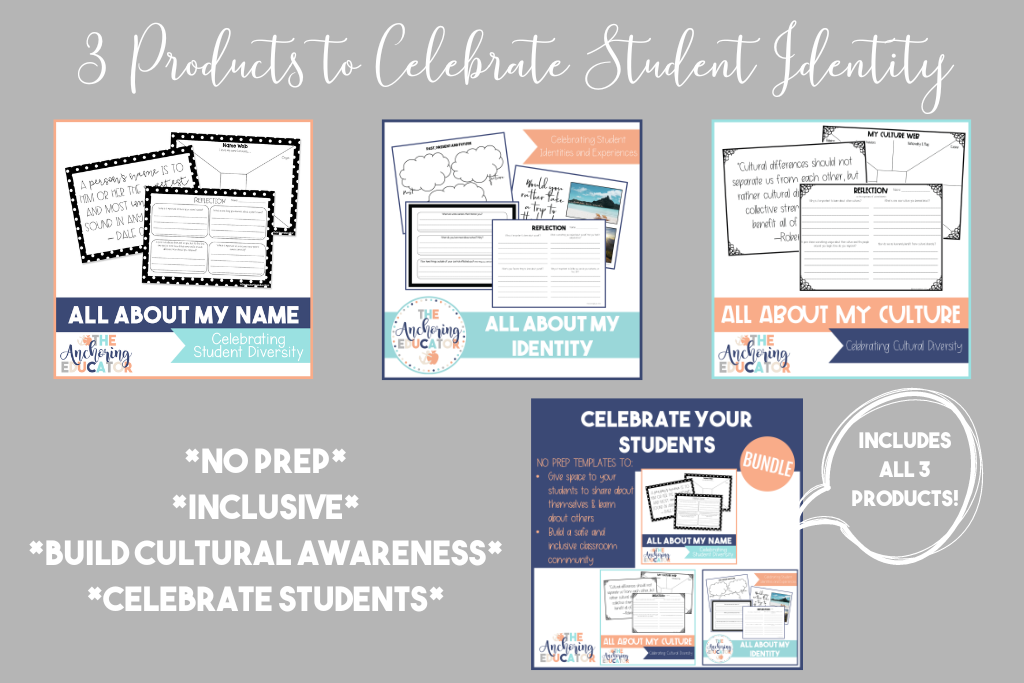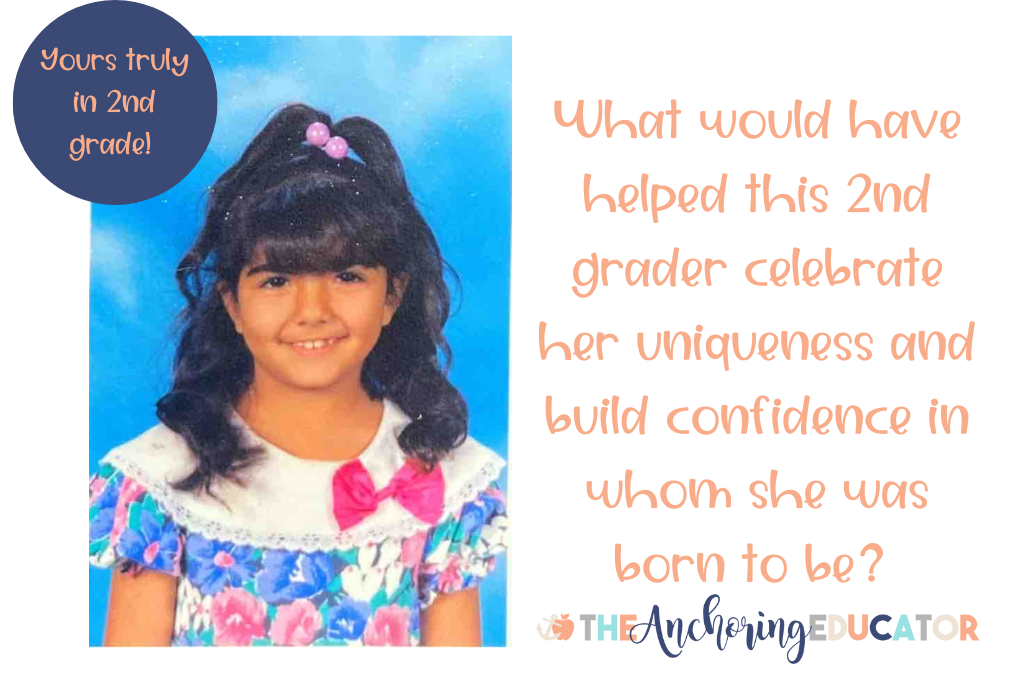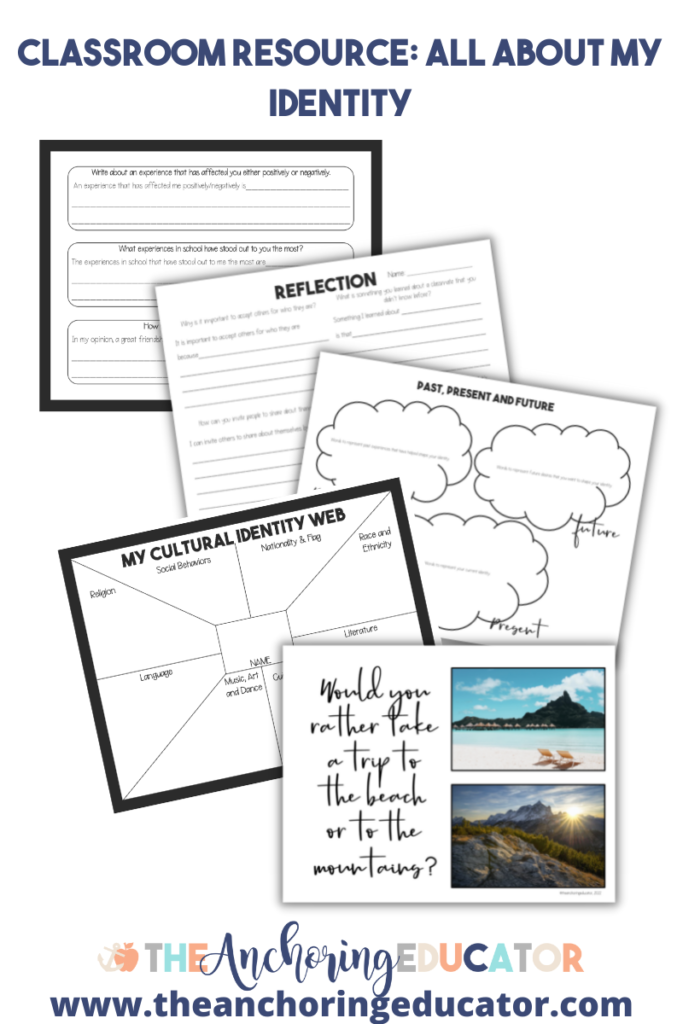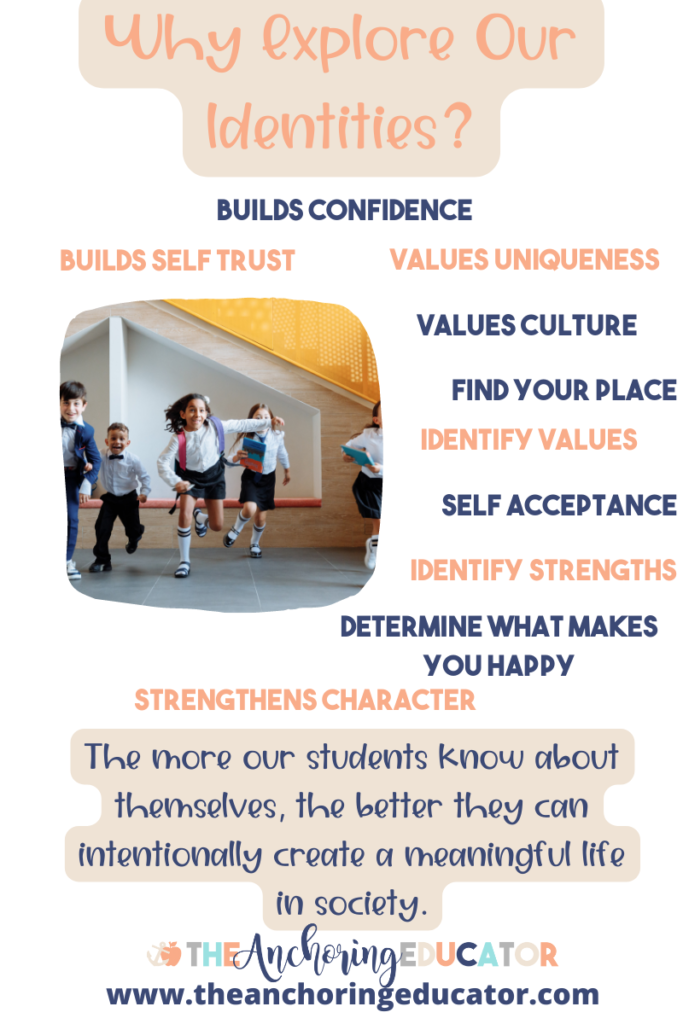Let’s talk about self-identity. What is self-identity? Self-identity is defined as recognizing your qualities and potential as an individual and in relation to society. If you’re here just for the how of helping your students feel more valued in the classroom by helping them tap into their identities, you can find my self-identity activity resource here: All About My Identity. You can also get the bundle: All About My Identity, Culture & Name at a discount. However, if you’d like to learn more about why I believe this is so crucial, read on!

My Story on Self-Identity
As an adult who is in education and deeply values therapy and self-reflection, I often look back on my experiences in school. Growing up as an Iranian-American with a single mother, there are a few things that stand out to me when I think back to my primary and secondary years. I remember my teachers struggling to pronounce my name year after year, which made each first day of school the worst. You can read more about my experience around that on my blog here. I was aware that I was different and I wanted my culture and family dynamics to stay under the radar. It was important for me to assimilate. I couldn’t hide my name or the color of my skin, so I did everything else in order to make myself blend in, even if that meant losing parts of myself I so appreciate now as an adult.
What do I wish would have been different for me in terms of my identity? What do I wish teachers recognized or acknowledged? Did I feel safe in the classroom? Did I feel valued? What do I wish was different about the ways in which I presented myself or related to my peers? Did I stand up for myself? Unfortunately for us who are no longer school-aged, we need to work to figure ourselves out as adults, but thankfully, we can do better to support our students in discovering themselves.
Bringing my culture into the classroom along with the cultures of the other students would have made such a difference. Celebrating students and their uniqueness. Celebrating diversity. Helping students get to know themselves, so at a young age, they can start to figure out who they are, what they stand for, and what they want to accomplish. Working to help our students better understand themselves in the context of a classroom community. This is why I’m so passionate about doing better for our students.

Student Identity in the Classroom
When students in your classroom have a strong sense of self, they are better able to navigate their emotions, their relationships, their performance in school and recognize their potential. Each individual student comes to our classroom with their own realities: societal, individual, and cultural. These realities can include systematic racism, socio-economic status, family dynamics, culture, etc. It’s not only our job to understand these realities, but to help our students understand their own realities so that they can navigate their life intentionally and on their own terms. This empowers our students to feel valued, build confidence and make choices that will help them reach their potential.
As teachers, we always talk about the “hidden curriculum.” That crucial social-emotional piece that we are supporting our students with day in and day out. We know that our classrooms are places where our students learn about themselves, their emotions, how to relate to others, their behaviors, and so on. This is our opportunity to be purposeful about it. You can check out my self-identity activity: All About My Identity to help you get started.
How Can I Support My Students?
Setting some time aside for students to intentionally learn about themselves, their values, backgrounds, interests, what brings them happiness, and strengths would be invaluable to them as growing citizens of our society. Giving our students’ space and time to do this builds their character and confidence. It also allows them to be authentic and accept themselves for who they are because of their OWN unique experiences. It will help them see their areas of strength and how they can capitalize on them to reach their potential.
We can’t control the cards we were dealt in life, but we can work to recognize them and use them to empower us. When students share their identities with each other, it creates a safe and inclusive classroom environment. In addition, it raises awareness of differences and allows your students to celebrate what makes them unique. I’ve created this resource: All About My Identity so teachers can start supporting their students with self-discovery.

What Are The Benefits of Activities About Identity?
My self-identity activity: All About My Identity can help start the conversation. Allowing students to explore their identities and share them with their peers can support them in:
- Building confidence
- Strengthening their character
- Valuing their uniqueness
- Accepting themselves
- Identifying their strengths
- Identifying what brings them happiness
- Finding their place (the more the know about themselves, the better they can determine how they want to contribute to our society)
- Trusting themselves
- Identifying their values
- Valuing culture
- Making choices that align with values, which is especially important when peer pressure sets in

When students know who they are, they are less likely to allow others to define them, either positively or negatively, or persuade them to do something they don’t actually want to do. In addition, if they have a strong sense of self, they will believe they CAN when others tell them they can’t. They won’t indulge in the negative comments made, but they also won’t allow the positive comments to define their worth either. Their worth will be found based on their own understanding of themselves. They will be allowed to live authentically and as teachers, I think that’s one of the most incredible things we can teach our students and help them to discover. Use my self-identity activity: All About My Identity to help you get started!
